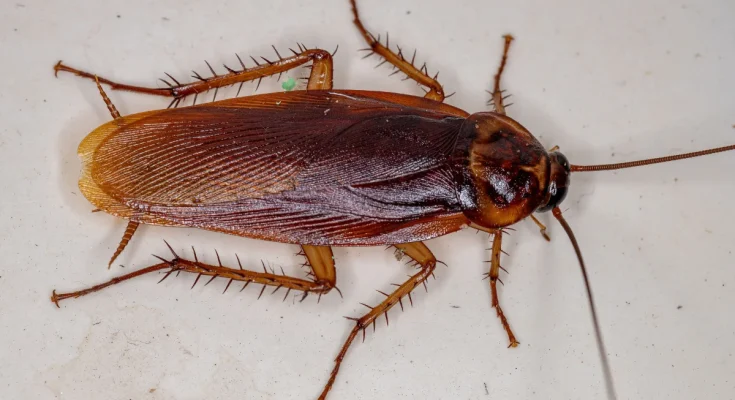American Cockroach (Periplaneta Americana): Key Information and Impact
The American Cockroach (Periplaneta americana) is one of the most widespread and largest cockroach species globally. Its size, adaptability, and resilience make it a fascinating yet concerning creature. In this article, we delve into key aspects of its biology, behavior, habitat, and impact on humans and the environment.
Physical Characteristics
The American cockroach is easily identifiable due to its size and coloration. Adults typically measure between 1.5 to 2 inches (4 to 5 cm) in length, making them the largest common cockroach species. They have a reddish-brown body with a distinctive yellow band around the edge of their pronotum, the shield-like structure covering their head. Both males and females possess fully developed wings, enabling them to glide short distances, although they are more adept at running than flying.
Habitat and Distribution
Despite its name, the American cockroach is not native to the Americas. It is believed to have originated in Africa and was introduced to the Americas via ships during the colonial era. Today, it is found worldwide, thriving in warm and humid environments. Common habitats include basements, sewers, commercial kitchens, and any place where food and water are readily available. In urban settings, they are often associated with poorly maintained infrastructure, where they exploit cracks, crevices, and pipelines for shelter and movement.
Life Cycle and Reproduction
The American cockroach’s life cycle consists of three stages: egg, nymph, and adult. Females produce egg cases, or oothecae, each containing 14 to 16 eggs. These oothecae are deposited in sheltered locations, where they hatch within 6 to 8 weeks. The nymphs undergo several molts over a period of 6 to 12 months before reaching adulthood. Adults can live up to one year, during which time they can produce hundreds of offspring, contributing to their rapid population growth in suitable conditions.
Behavior and Diet
As nocturnal creatures, American cockroaches are most active at night, foraging for food and water. They are omnivorous scavengers, consuming a wide range of organic matter, including crumbs, grease, decaying food, and even non-food items like paper and glue. Their ability to survive on minimal resources makes them highly resilient and challenging to control.
Health Risks and Environmental Impact
American cockroaches pose significant health risks to humans. They are known carriers of various pathogens, including bacteria, viruses, and parasites, which can contaminate food and surfaces. Diseases linked to cockroaches include salmonellosis, dysentery, and gastroenteritis. Additionally, their shed skins, droppings, and secretions can trigger allergies and asthma, particularly in children and sensitive individuals.
From an ecological perspective, American cockroaches play a role in breaking down organic matter, contributing to nutrient cycling. However, their presence in human habitats often outweighs their ecological benefits, as they are seen as pests.
Prevention and Control
Managing American cockroach infestations requires a combination of sanitation, exclusion, and targeted treatments. Key preventive measures include:
- Maintaining Cleanliness: Regularly cleaning kitchens, disposing of garbage promptly, and sealing food containers can limit their food sources.
- Eliminating Moisture: Fixing leaks and reducing humidity levels in basements and other areas can make environments less hospitable.
- Sealing Entry Points: Caulking cracks, installing door sweeps, and repairing damaged screens can prevent their entry.
- Professional Pest Control: In severe infestations, professional exterminators may use bait stations, insecticidal sprays, and other methods to eradicate them effectively.
Conclusion
The American cockroach is a testament to nature’s adaptability, thriving in diverse environments and challenging human efforts to control it. While they play a minor role in the ecosystem, their health risks and association with unsanitary conditions make them unwelcome in homes and businesses. Understanding their biology and behavior is key to managing their presence and mitigating their impact. By implementing preventive measures and maintaining vigilance, we can reduce the likelihood of infestations and ensure a healthier living environment.

